Premium Only Content
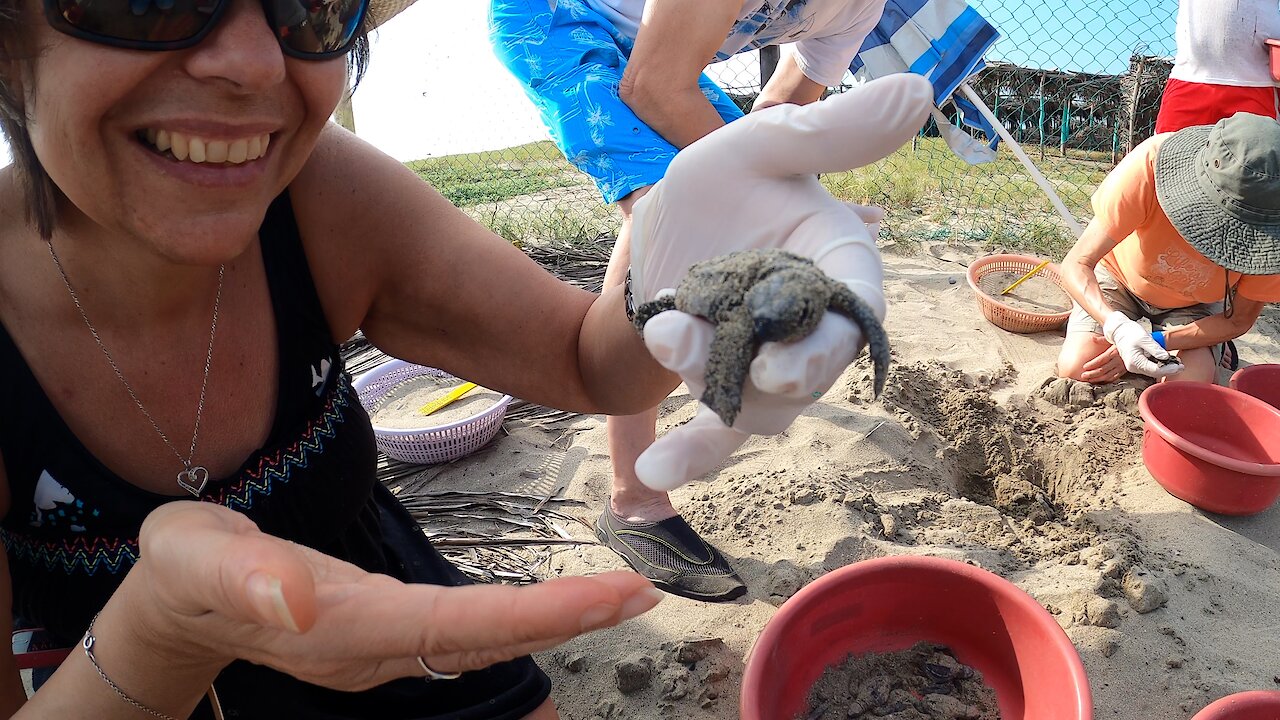
Woman helps baby turtles dig out of their nests
Along the Pacific Coast of southern Mexico are two towns that mainly have become known as one, Ixtapa and Zihuantanejo. Situated in the state of Guerrero, Ixtapa Zihuantanejo are two separate towns situated a short 8 kilometres (5 miles) apart . They are approximately 150 miles north of Acapulco. Both towns have amazing beaches and warm waters, although Zihua is within a small bay whereas Ixtapa’s beach area is more open to the open Pacific Ocean. Ixtapa Zihuantanejo is the fourth largest city in the state of Guerrero and is very popular with tourists from within Mexico as well as the United States and Canada. While doing a little research of the area, this couple learned of a private turtle release project that was not a far distance from Zihua.
The turtle camp is at Petatillo beach in the municipality of Union in the Guerrero state. Mr. Felix and his wife Doña Chucha created and have been tending to their turtle hatching farm for over 16 years, and have never had any financial support from the Mexican government. It has only been in the last 2 years, that tours have begun coming to visit Mr. Felix and Doña to see the amazing work they are doing to grow the numbers of the Golfina turtles in this area. After contacting Eco Ixzi Travel in Zihua, the excursion was booked and planned. Julio López was the tour guide for the day and he showed an incredible amount of passion for what Mr. Felix has been doing for the past 16 years. Julio is also very knowledgeable of the whole Guerrero state as well as other surrounding states and cities. His knowledge of the turtle populations and how the efforts of Mr. Felix has drastically helped increase the numbers of the Golfina, as well as 3 other species of turtles native to the area. Once arriving at the turtle camp location, the small group of excited tourists, were guided to a covered section with small tables and chairs at which time Julio began explaining the efforts of Mr. Felix.
As mentioned, he and his wife have been living a very simple life, on the beach, caring and tending to many turtle nests which are all within a protected fenced in area to help protect the eggs from predators. Each evening around 1:00 am, Mr. Felix ventures out on his ATV, searching the coastline for fresh turtle nests. Searching approximately 5 kilometers(3 miles )each direction from the camp, Mr.Felix then excavates the fresh nests, gathering all the eggs, to bring back to his well protected site. Keeping records for each nest, Mr. Felix records the date, number of eggs, and the nest location on a small peg which he places at each new location within his pens. The miracle of these little turtles hatching takes 45 days. At that time, tourists visiting are shown to a nest, where they will be allowed to assist these little creatures to escape their sand covered beds. Latex gloves must be worn to protect the babies from infection, once donned, the visitors proceed to gently remove sand around the perimeter of the nest, being very gentle with each stroke. Removing handful by handful the turtle babies come into view bringing great emotion to the group. Slowly and steadily Brent and Elsa removed every last baby from within the nest, placing them into plastic shallow tubs. Covering the inside bottom of each plastic tub with a bit of damp sand keeps the babies calm after being removed from their nests. Taking approximately 30 minutes for their instincts to kick in, the babies slowly become active. Their instincts take time to “kick in” , programming them for their future return to this location for breeding.Of course not all theses amazing babies will return to lay eggs as some are male. The sex of the hatchlings is determined not by fertilization, but by the temperature of the nest. Once the babies begin to move about in the plastic bins, Mr. Felix and Julio jointly decided when it was time for the visitors to release the babies into the sea.
Calling it “a turtle race”, Julio mentioned everyone would release their turtles at the same time, to see just how different some are from others. “ Uno, dos, tres” announced Julio and all the babies were gently poured out onto the sand. The race was on. Statistics show that approximately 10 percent of the hatched baby turtles will return to this exact location. There are many predators out in the open ocean. Birds are one large factor to the babies survival, which is why these turtles are released near sunset as many of the local birds have returned to their nests for the evening. Large fish are also another predator that limits the life expectancy of these little guys. Hopefully returning in 10 years, these Golfina or Olive Ridley turtles will grow to a length of around two feet long and weigh nearly 100 pounds. This amazing excursion for those who love wildlife, is a definite trip to do while in the area of Ixtapa Zihuantanejo. Contact Julio at Eco Ixzi Travel for a memorable day that you will not forget.
-
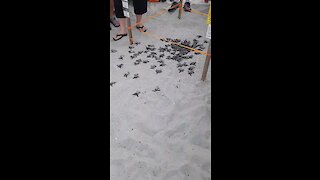 2:45
2:45
ViralHog
5 years ago $0.16 earnedBaby Sea Turtles Begin Ocean Adventure
35.4K1 -
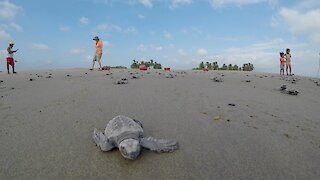 1:49
1:49
cdngreenwaterdiver
5 years ago $7.70 earnedHundreds of baby turtles race to the sea
3.76K6 -
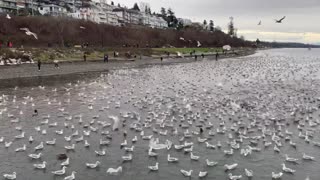 1:41
1:41
ViralHog
5 years ago $0.01 earnedSeagulls and Seals Love Their Anchovies
103 -
 0:24
0:24
5rfarmoregon
5 years ago $22.89 earnedTurkeys defend their farm from nosy deer
3.64K1 -
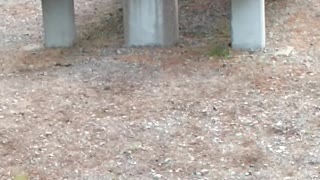 0:59
0:59
ViralHog
6 years agoA Deer Eats Their Gear
128 -
 0:27
0:27
WochitNow
5 years agoJaguar Attacked Woman On Phone Snapping Selfie
549 -
 4:01
4:01
WMAR
5 years agoTucker's Teddies: Woman helps parents who lose their babies
15 -
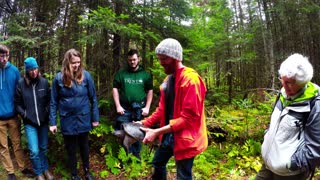 2:17
2:17
WildCreatures
5 years ago $5.58 earnedHow to safely pick up & move snapping turtles when needed
15.7K1 -
 1:27
1:27
SWNS
5 years agoMajestic African animals in their natural habitat caught on camera with a drone
58 -
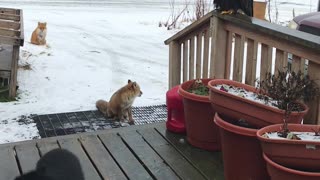 0:32
0:32
ViralHog
6 years agoAlaskan Wildlife Greets Woman at Front Door
59